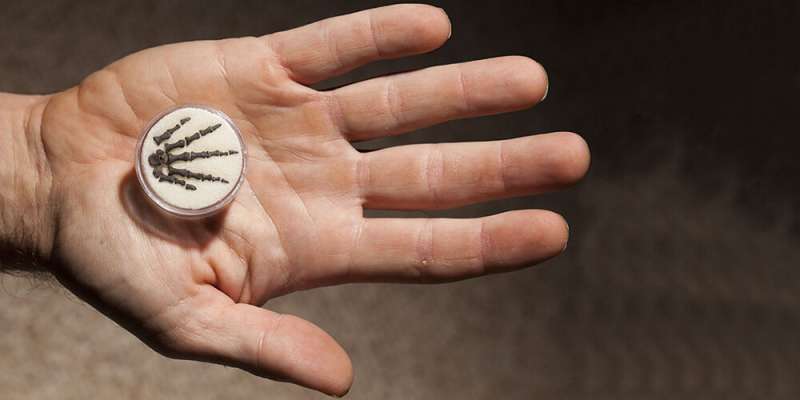Robust gene networks from the depths of our evolutionary history

A sophisticated system guides the development of our limbs. Researchers at University of Basel have shed new light on the genetic toolkit used during evolution to create a range of different extremities such as fins, wings, hooves, toes and fingers.
Much can go wrong when a fertilized egg develops into an embryo and ultimately gives rise to a newborn as mutations in the genome that affect development are relatively common. The fact that embryonic development is usually flawless for humans and animals is due to the fact that genetic programs are controlled by series of gene circuits that can back one another up in a self-regulatory fashion.
This robustness of developmental programs is a key interest of the research group led by Professor Rolf Zeller and PD. Dr. Aimée Zuniga at the Department of Biomedicine, University of Basel. They seek to gain insights into this process studying a key regulator of limb development, a protein called "Gremlin1". This protein stops cells from forming bones too early and functions in fine tuning the activity of several signaling networks by connecting them with one another. Most importantly, Gremlin1 is responsible for the correct formation of the so called limb buds, which are the tiny embryonic structure that will give rise to our extremities.
A network secures perfect development
Studies using mouse embryos have enabled researchers to decipher yet another level of regulation—and robustness—of this developmental program. In the scientific journal Nature Communications, they describe a series of "switches" embedded in the genome of all vertebrates which ensures that the correct amount of Gremlin1 is produced at the right place. These switches are called "enhancers".
Zuniga compares the system that she and her team are investigating with a room's lighting system that is controlled by a series of switches. The light enables one to read the instructions to build correctly formed extremities. "In the beginning, we did not know what each individual switch contributes to lighting the room," the researcher explains. "There could be a master switch that turns off all lights, making the instructions impossible to read. Instead, we now know that all switches contribute to the lighting system: if one switch is broken the amount of light is only marginally or not at all affected and the information can still be read. This is why the system is so robust. On the other hand, once too many switches are broken, too little of the information can be read, and in the worst case none at all."
Indeed, analysis by Ph.D. student Jonas Malkmus and colleagues showed that individual switches can be inactivated without disrupting Gremlin1 or the development of extremities. However, below a certain threshold of functioning switches, the system fails and malformations occur. "The multiple safeguards in the system explain why birth defects due to genetic alterations in Gremlin1 regulation are extremely rare," says Malkmus.
Stability with potential for change
Next, the researchers set out to identify the evolutionary roots of this robust series of switches. They found that the core of this series of switches that ensures the correct amount and distribution of Gremlin1 in human embryos existed in fishes already more than 400 million years ago. "This shows that evolution already had the toolkit for developing extremities even before fins evolved into legs and the first animals went ashore," explains Zuniga. What changed over the course of evolution was the activity of individual enhancers and, as a result, the distribution of Gremlin1. "The activity of the genetic switches and the distribution of Gremlin1 in limb buds prefigures their subsequent development into fins, wings, hooves or hands and feet," explains Zeller.
If only one switch would regulate the production of Gremlin1, then the evolutionary pressure to keep this switch exactly as it is would be huge. "A system with many switches ensures that the system does not easily fail," says Zuniga. "And it gives evolution room for change." Therefore, individual switches have been able to change without significant pressure, and this has played a part in the development of a wide range of extremities during the history of evolution.
More information: Jonas Malkmus et al, Spatial regulation by multiple Gremlin1 enhancers provides digit development with cis-regulatory robustness and evolutionary plasticity, Nature Communications (2021). DOI: 10.1038/s41467-021-25810-1
Journal information: Nature Communications
Provided by University of Basel




















